2011 年山东青岛大学基础英语(2)考研真题
I. Vocabulary and Structure (20 points)
Choose one of the four answers that best completes the sentence.
1. The resort encourages visitors to _______ the brochure before making a
reservation.
(A) look through
(B) look around
(C) look forward to
(D) look up to
2. The Great Wall, _______ China’s first line of defense, is now merely a
tourist attraction.
(A) because of
(B) being
(C) once
(D) before
3. They were giving nothing_______ dry bread and water for their evening
meal.
(A) other than
(B) more than
(C) less than
(D) rather than
4. _______ of the grassland dwellers of the North America continent is the
�
antelope or pronghorn.
(A) Typical
(B) Typical is
(C) The typical
(D) It is typical
5. Since I could not see anything through microscope, _______ my careful
adjustment, I gave up.
(A) for all
(B) above all
(C) after all
(D) in all
6. Bids for the proposals must received _______.
(A) prior to the deadline March first
(B) the March first deadline prior to
(C) to the March first deadline prior
(D) prior to the March first deadline
7. Automations programmed to perform a given task _______ the flexibility
and adaptability of human beings.
(A) without
(B) lack
(C) minus
(D) not having
�
8. Everyone in the office was asked to _______the gift for the retiring
vice-president..
(A) look after
(B) give over
(C) take up for
(D) go in for
9. Improved technology is always a source of lower costs and a _______ to
economic growth.
(A) tax
(B) spur
(C) gem
(D) digression
10. There has not been a _______ in May since 1908.
(A) snowy
(B) snowstorm
(C) snowing
(D) storm of snow
11. Mr. Davidson launched his first successful _______ at age of fifteen, when
he produced his own radio program.
(A) profitability
(B) venture
(C) equity
�
(D) revenue
12. Many companies believe that their lack of knowledge about global markets
is an insurmountable _______.
(A) border
(B) limit
(C) barrier
(D) access
13. He is planning another tour abroad, yet his passport will _______ at the
end of this month.
(A) expire
(B) exceed
(C) terminate
(D) cease
14. Automated teller machines enable people to do their banking at anytime,
seven days _______.
(A) weekly
(B) week
(C) in a week
(D) a week
15. A retirement plan ensures one’s well-being in one’s _______.
(A) oldness
(B) old age
�
(C) elderly
(D) senile
16. According to one belief, if truth is not to be known it will make itself
apparent, so one _______ wait instead of searching for it.
(A) would rather
(B) had to
(C) cannot but
(D) had best
17. If we _______ our relations with that country, we’ll have to find another
supplier of raw materials.
(A) diffuse
(B) diminish
(C) terminate
(D) preclude
18. Classical acting is characterized by an eternal _______ of balance between
the natural and the stylized.
(A) redundancy
(B) quest
(C) conflict
(D) quality
19. In some corporations, employees _______ offices, desks, and room
assignments.
�
(A) circle
(B) rotate
(C) take turns
(D) exercise
20. The various countries are striving to defend their_______ economics
against imperialist trade attacks.
(A) respected
(B) respectful
(C) respectable
(D) respective
II. Cloze (15 points)
There are fifteen blanks in the following passage. For each blank there are four
choices marked A, B, C and D. You must choose the ONE that best fits into
the passage.
In the United States, older people rarely live with their adult children. But
in many other cultures children are expected to care 1 their aged parents.
In some parts of Italy, the percentage of adult children who 2 with their
parents 3 65 to 70 percent. In Thailand, too, children are expected to
care for their elderly parents; few Thai elderly live alone.
What explains these differences in living arrangements 4 cultures?
Modernization theory 5 the extended family household to low levels of
economic development. In traditional societies, the elderly live with their
�
children in large extended family units for economic reasons. But with
modernization, children move to urban areas, leaving old people 6 in
isolated rural areas. Yet modernization theory cannot explain why extended
family households were never common in the United States or England, or
why families in Italy, which is fully modernized, 7 a strong tradition of
intergenerational living. Clearly, economic development alone cannot explain
8 living arrangements.
Another theory associated intergenerational living arrangements with
inheritance patterns. In some cultures, the stem family pattern of inheritance
9 . Under this system, parents live with a married child, usually the
oldest son, who then 10 their property when they die. The stem family
system was once common in Japan, but changes in inheritance laws, 11
broader social changes brought 12 by industrialization and urbanization,
have 13 the tradition. In 1960 about 80 percent of Japanese over 65
lived with their children; by 1990 only 60 percent did—a figure that is still
high 14 U. S. standards, but which has been declining steadily. In 5
Korea, too, traditional living arrangements are 15 : the percentage of
aged Koreans who live with a son declined from 77 percent in 1984 to 50
percent just 10 years later. Although most elderly Koreans still expect to live
with a son, their adult children do not expect to live with their children when
they grow old.
1. A about B after C for D over
�
2. A reside B recite C redeem D rebel
3. A amasses B amounts C attains D reaches
4. A over B across C within D above
5. A associated B linked C united D combined
6. A aside B after C over D behind
7. A maintain B promote C reserve D support
8. A appointed B assigned
C preserved D preferred
9. A controls B overtakes C predominates D overwhelms
10. A delivers B conveys C conceives D inherits
11. A as well as B might as well C as well D well as
12. A off B up C around D about
13. A undermined B decreased C diminished D defeated
14. A by B on C with D in
15. A receding B removing C invading D eroding
III. Error Correction (15 points)
The passage contains TEN errors. Each indicated line contains a maximum of
ONE error. In each case, only ONE word is involved. You should proofread
the passage and correct it in a right way.
For a wrong word, underline the wrong word and write the correct one in the
blank provided at the end of the line
For a missing word, mark the position of the missing word with a “∧ ” sign
�
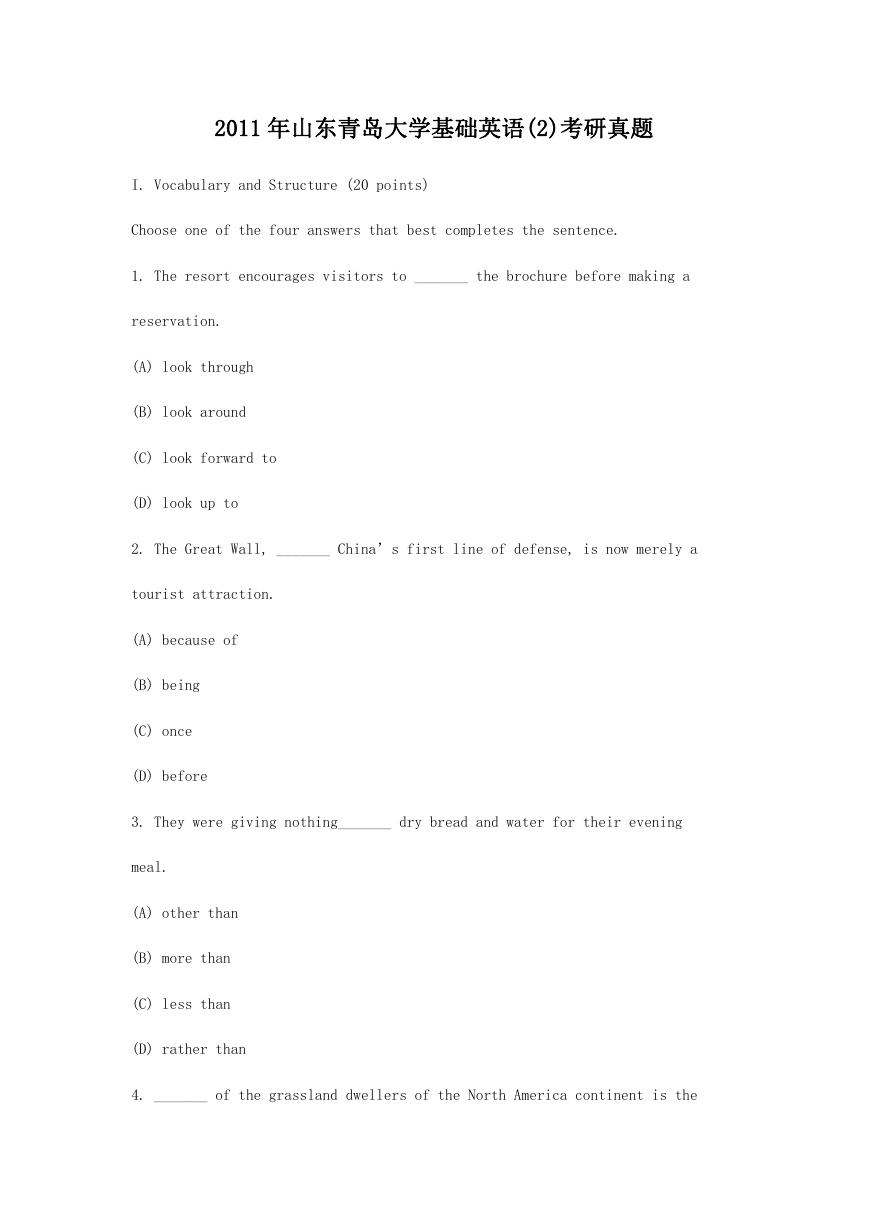
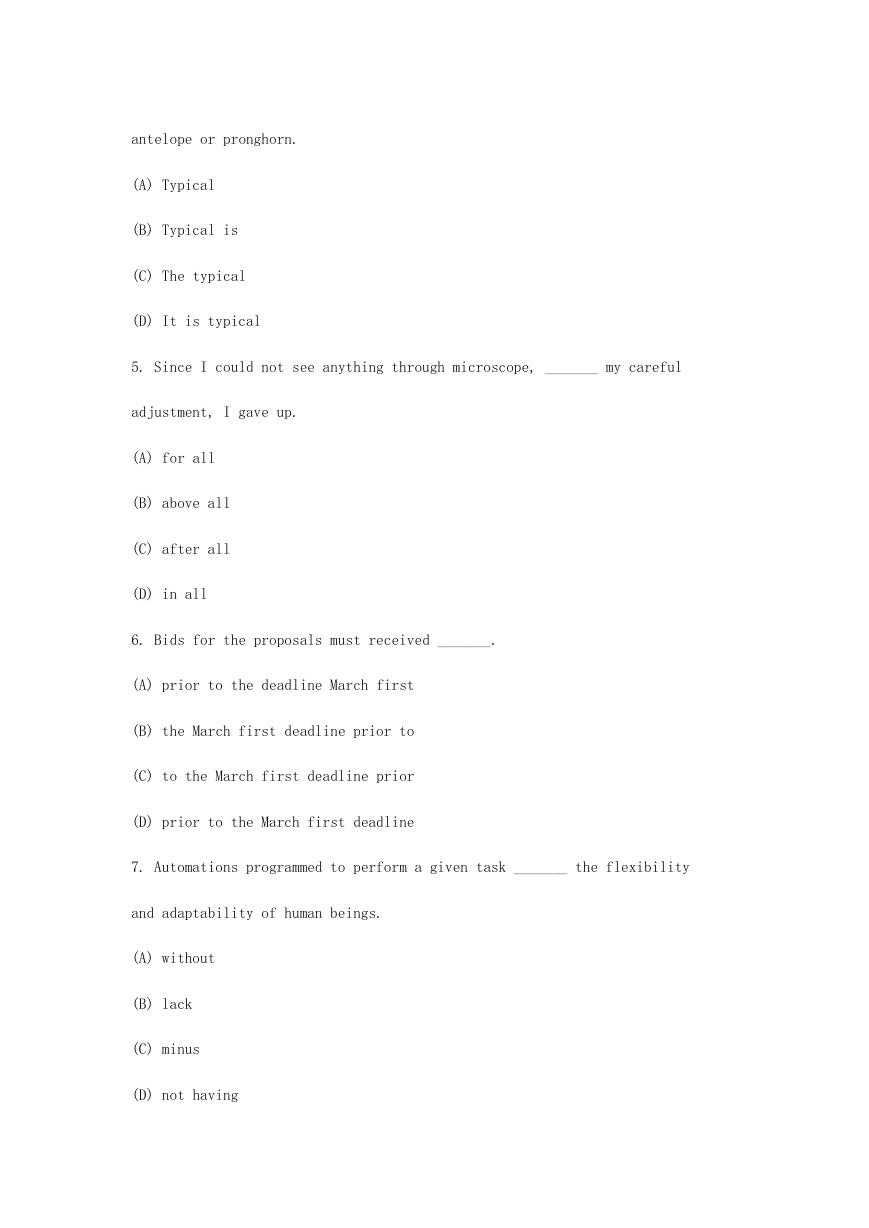
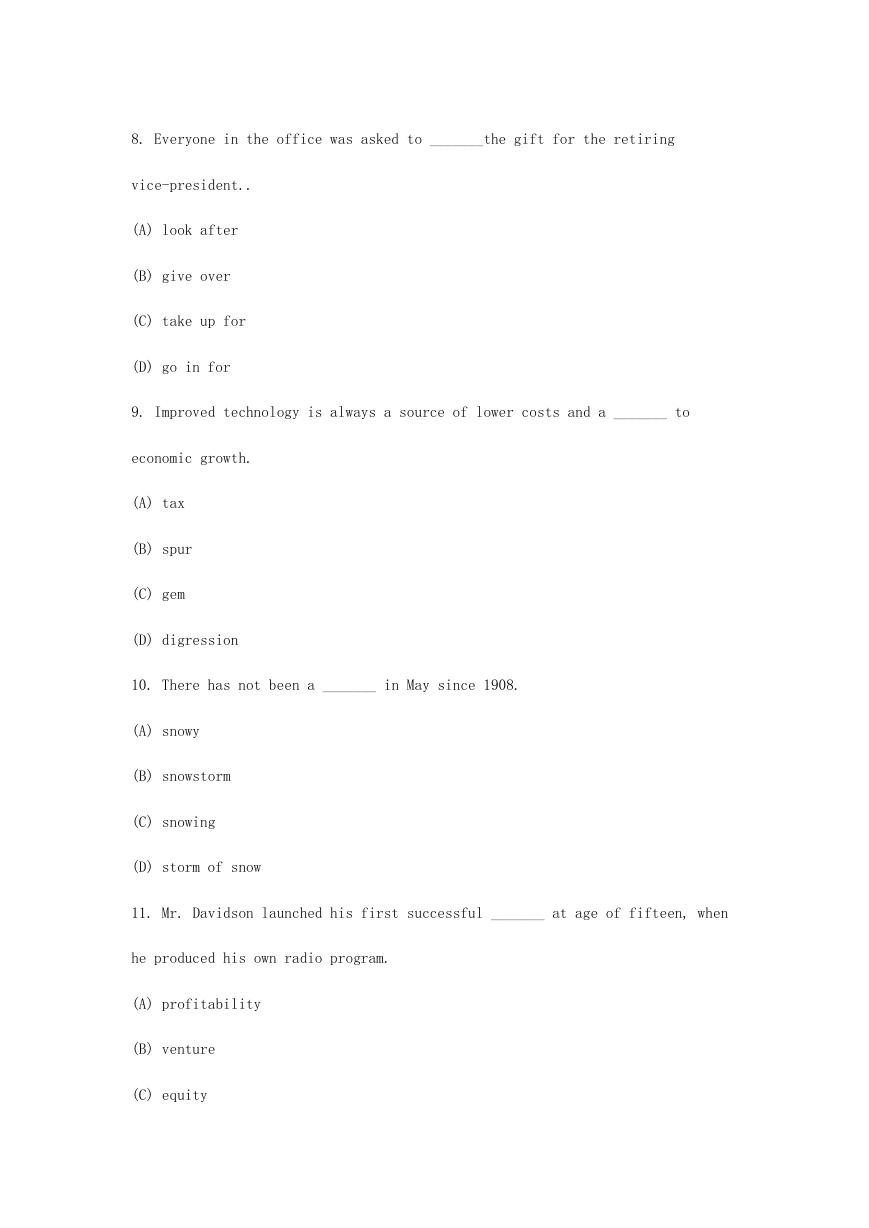

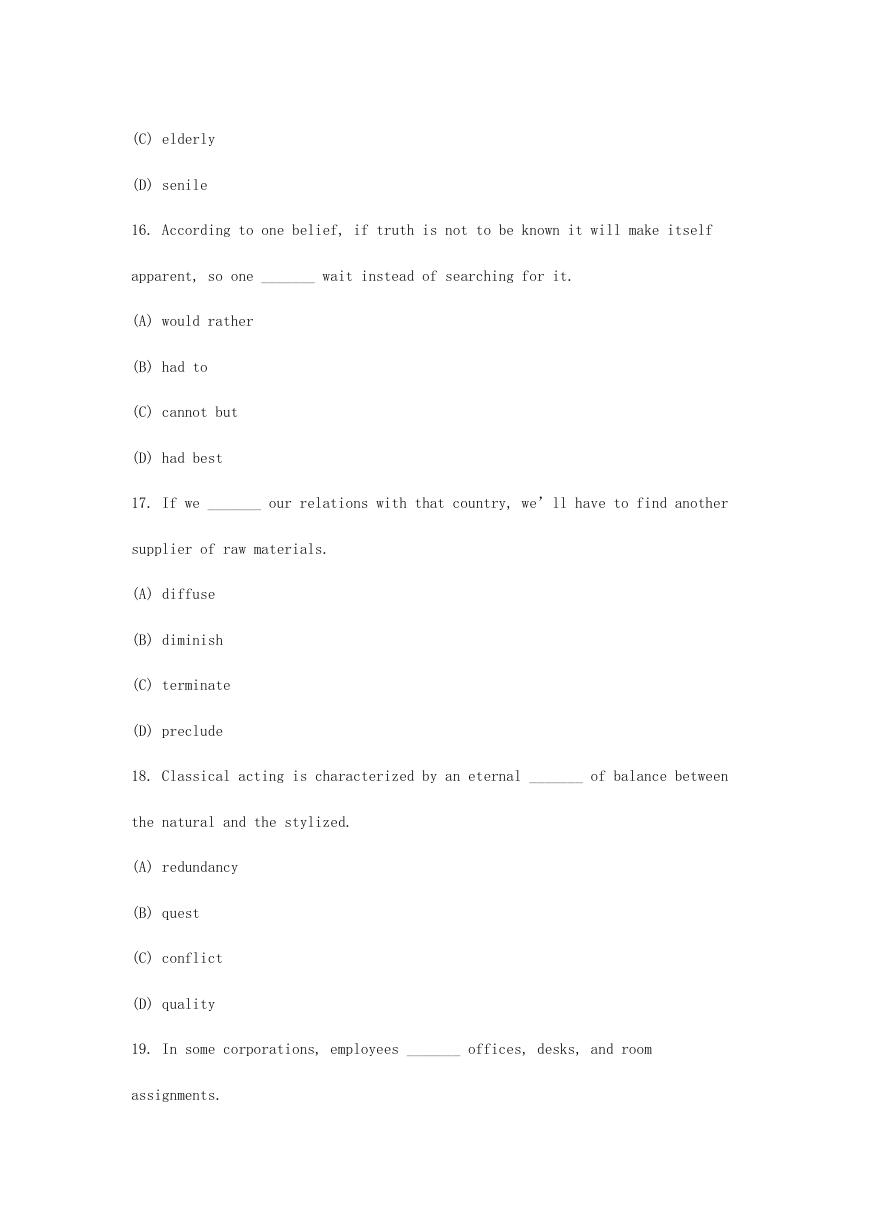
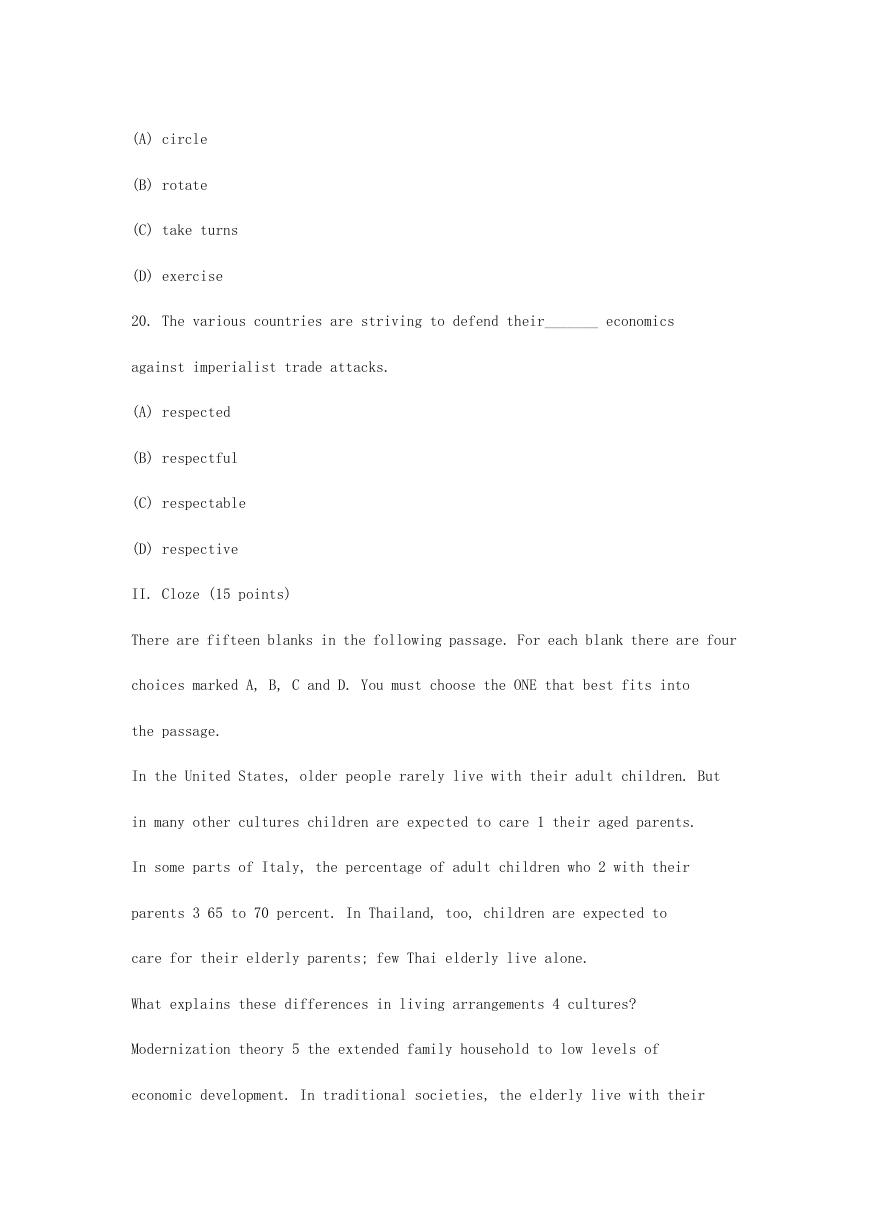
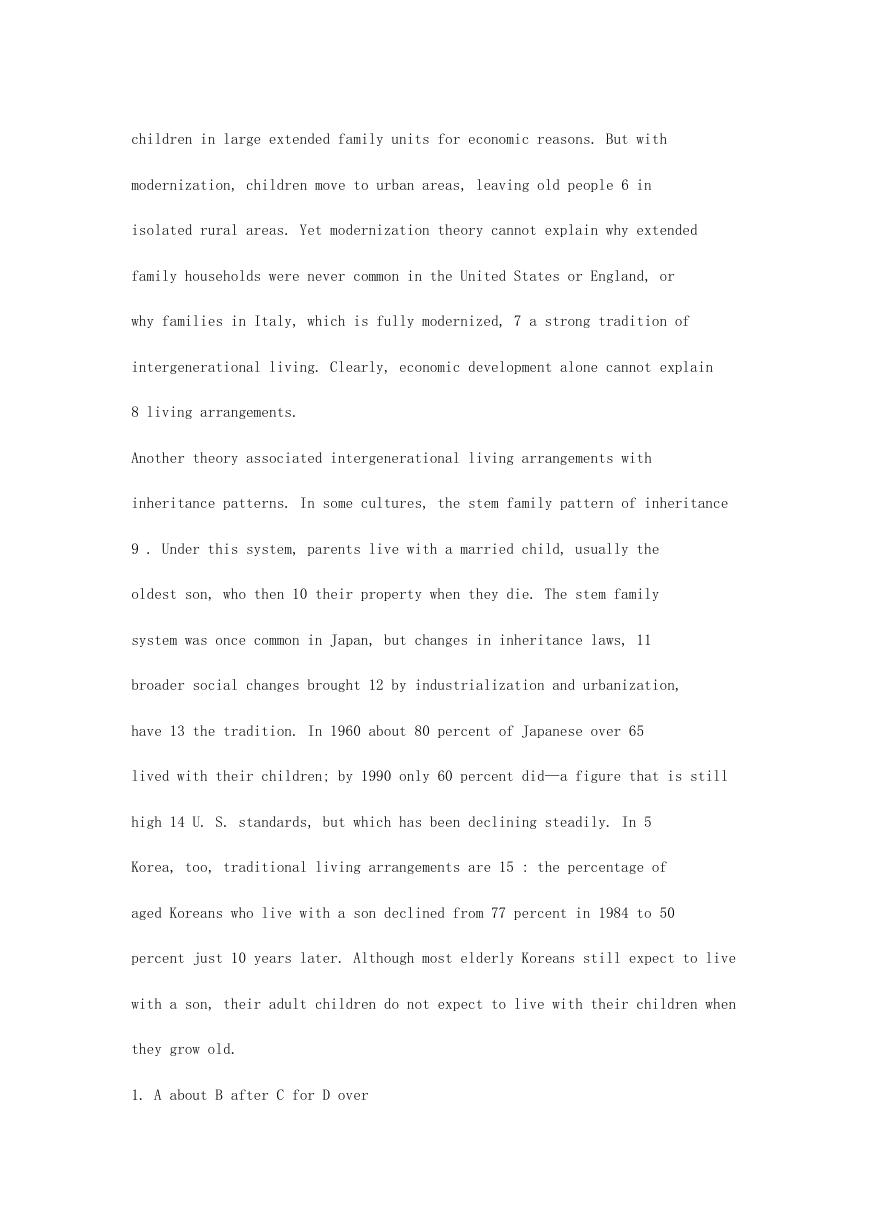
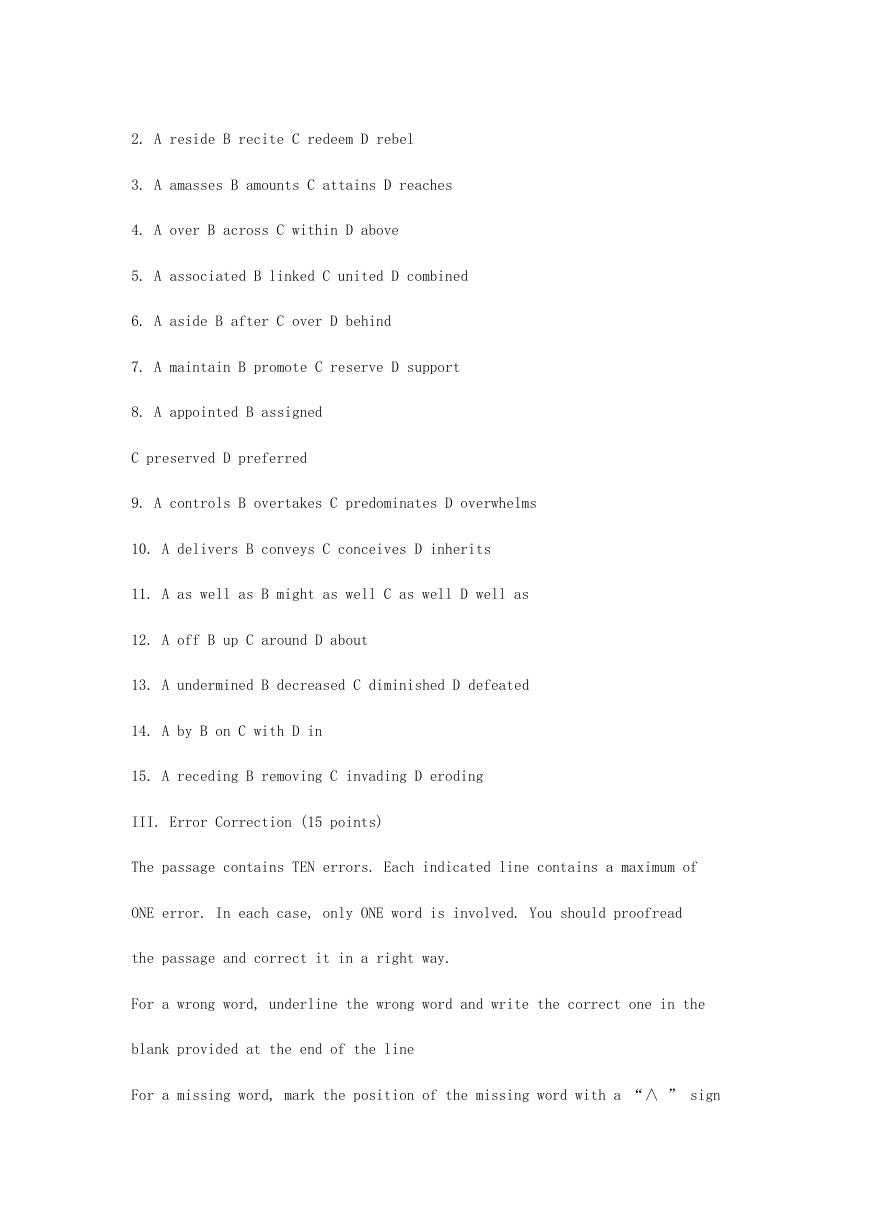








 2023年江西萍乡中考道德与法治真题及答案.doc
2023年江西萍乡中考道德与法治真题及答案.doc 2012年重庆南川中考生物真题及答案.doc
2012年重庆南川中考生物真题及答案.doc 2013年江西师范大学地理学综合及文艺理论基础考研真题.doc
2013年江西师范大学地理学综合及文艺理论基础考研真题.doc 2020年四川甘孜小升初语文真题及答案I卷.doc
2020年四川甘孜小升初语文真题及答案I卷.doc 2020年注册岩土工程师专业基础考试真题及答案.doc
2020年注册岩土工程师专业基础考试真题及答案.doc 2023-2024学年福建省厦门市九年级上学期数学月考试题及答案.doc
2023-2024学年福建省厦门市九年级上学期数学月考试题及答案.doc 2021-2022学年辽宁省沈阳市大东区九年级上学期语文期末试题及答案.doc
2021-2022学年辽宁省沈阳市大东区九年级上学期语文期末试题及答案.doc 2022-2023学年北京东城区初三第一学期物理期末试卷及答案.doc
2022-2023学年北京东城区初三第一学期物理期末试卷及答案.doc 2018上半年江西教师资格初中地理学科知识与教学能力真题及答案.doc
2018上半年江西教师资格初中地理学科知识与教学能力真题及答案.doc 2012年河北国家公务员申论考试真题及答案-省级.doc
2012年河北国家公务员申论考试真题及答案-省级.doc 2020-2021学年江苏省扬州市江都区邵樊片九年级上学期数学第一次质量检测试题及答案.doc
2020-2021学年江苏省扬州市江都区邵樊片九年级上学期数学第一次质量检测试题及答案.doc 2022下半年黑龙江教师资格证中学综合素质真题及答案.doc
2022下半年黑龙江教师资格证中学综合素质真题及答案.doc